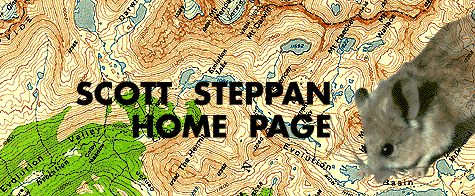 |
 |
| Current Research | Publications | Contact | Photography |
Explaining the origin and changes in biological diversity is a fundamental goal of evolutionary biology and ecology. This research would provide three primary contributions to this goal. (1) Continue development of a 550+ species phylogeny for the muroid rodents (mice, rats, hamsters, gerbils, etc...), the most diverse and successful family-level group of mammals that also includes most of the species used for biomedical research. Over 200 species will be sequenced for 4-5 genes, to add to our existing 9 gene, 240 species data set. The resulting phylogeny will provide the framework for many other researchers to study the evolution of this group, integrating paleontological data, applying molecular clock dates to understand historical biogeography, and explore mechanisms that promote diversification. ( 2) Skulls will be digitized in 3D for >200 species and the shape characters (traditional characters and geometric morphometric characters) mapped onto the phylogeny to reconstruct temporal patterns in morphological diversification. We will compare and contrast the tempo and mode of diversification in molecular and morphological characters Several alternative models of diversification will be explicitly tested, including key innovations as triggers for diversification, expansion into new geographic areas, adaptive radiations, and relaxation of constraints on evolution due to changes in the underlying genetic and developmental programs. (3) Produce a large-scale test of the constancy or patterns of change in those underlying genetic constraints, as expressed by the within-species correlation among phenotypic traits. Phenotypic variance-covariance matrices will be estimated for a 50 species subset and these calibrated by remeasuring the existing 9 muroid species that have been studied for genetic variance-covariance matrices. This study will thus also have significance for quantitative geneticists and for efforts to understand macroevolutionary patterns in terms of the underlying microevolutionary processes. By integrating these molecular, 2D and 3D morphological, geographic, and quantitative genetic data sets, the project will provide a window on to the processes that promote biological diversity.
NSF-funded post-doctoral and graduate student positions are available beginning spring or summer 2009 (post-doc) and fall (grad student) in the lab of Scott Steppan at Florida State University on molecular and morphological diversification of the muroid rodents. Post-doc position will initially be for one year with possible extension of up to three additional years. The project will involve using multiple nuclear genes to infer the phylogeny of the most diverse clade of mammals, the rodent superfamily Muroidea, macroevolutionary patterns of diversification in morphology, and comparative quantitative genetics. Successful applicants and graduate students will have opportunities to develop independent research questions involving systematics, molecular evolution, biogeography, macroevolutionary trends, and adaptive radiations.
The Ecology and Evolution program is a highly interactive and supportive environment that works closely with the Computational Evolutionary Biology group in the Dept. of Scientific Computing.
Post-doc applicants should have a Ph.D. in evolution, systematics, or related field and be proficient in PCR, DNA sequencing, and phylogenetic analysis. Subsequent years will include 3D digitization of museum specimens and possibly computational projects. Salary will start at $38,000 and start date is negotiable. Review of applications will begin Jan. 10 and continue until the position is filled. Graduate student applications are due Jan. 15. Additional information on the Steppan Lab is available from http://bio.fsu.edu/~steppan/, on the Ecology and Evolution group at http://www.bio.fsu.edu/ee/index.html, and the Department (for graduate application, etc...) at http://www.bio.fsu.edu/. Post-doc applicants should submit a cover letter, CV, short statement of research interests, and the names of three or more references. Graduate applications are made through the departmental web site.
For more information, contact, Dr. Scott Steppan; e-mail: steppan@bio.fsu.edu; phone: (850) 644-6536; fax: (850) 644-9829.
Page accessed times. Web Counter